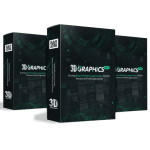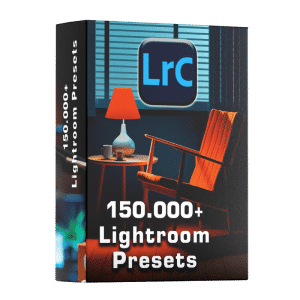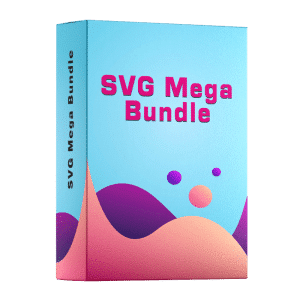Description
Transform Your Projects with the Ultimate 3D Graphics Powerhouse
Unleash jaw-dropping visuals with our extraordinary 3D Graphics Pack! This comprehensive collection boasts a staggering 1500+ elements, empowering you to elevate your designs to new heights.
- Bring Your Brand to Life: Infuse personality with 275+ animated avatars, each meticulously crafted to capture diverse emotions and expressions.
- Establish a Powerful Identity: Choose from 1000+ captivating logos that embody your brand’s essence and make a lasting impression.
- Showcase Your Products in Style: Entice your audience with 250+ stunning 3D eCovers that project professionalism and irresistible appeal.
This massive package is your one-stop shop for eye-catching graphics that leave a mark. Perfect for websites, social media, presentations, marketing materials, and beyond!
3D Graphics Pack: A Comprehensive Guide to Empowering Creativity in Digital Design
The world of digital design has evolved immensely in recent years, driven by advancements in technology and software tools. Among the most significant developments is the rise of 3D graphics, which have revolutionized industries such as entertainment, gaming, architecture, product design, advertising, and more. With the increasing demand for realistic and immersive digital visuals, the need for high-quality 3D assets has never been greater. The “3D Graphics Pack” is a vital resource for creators, offering a curated collection of 3D models, textures, environments, animations, and more to help designers bring their visions to life.
In this article, we will explore the concept of a 3D graphics pack, its importance in the creative process, the types of assets it includes, and how it can be used across various industries. Whether you’re a game developer, architect, animator, or visual artist, understanding the power and potential of a 3D graphics pack can greatly enhance your workflow and creative output.
What is a 3D Graphics Pack?
A 3D graphics pack is a curated collection of pre-made 3D assets and resources that can be used in various digital projects. These packs are typically designed to simplify and accelerate the design process, allowing creators to access high-quality 3D models, textures, environments, and animations without having to create everything from scratch. Whether you’re working on a video game, a virtual reality (VR) experience, a product design, or an animation, a 3D graphics pack provides the necessary components to build a visually stunning and immersive environment.
The assets included in a 3D graphics pack are typically optimized for use with popular 3D design software, such as Blender, Autodesk Maya, Cinema 4D, 3ds Max, Unity, Unreal Engine, and more. These software tools are commonly used by designers, artists, and developers to create, manipulate, and render 3D models for various purposes. A well-organized 3D graphics pack saves time and resources by providing easy-to-import models and materials that can be customized to fit the specific needs of a project.
Importance of a 3D Graphics Pack in the Creative Process
Creating 3D assets from scratch can be a time-consuming and complex process, requiring advanced skills in modeling, texturing, lighting, and animation. By using a 3D graphics pack, creators can skip much of the groundwork and focus on other aspects of their projects, such as storytelling, scene composition, and interactivity. A well-designed pack can greatly speed up the production process, allowing designers to meet deadlines and push the limits of creativity without sacrificing quality.
Here are some key reasons why a 3D graphics pack is essential for modern design workflows:
- Time and Efficiency: Building 3D assets from the ground up can take hours, if not days, depending on the complexity of the object or scene. With a 3D graphics pack, designers have immediate access to ready-made models and assets, which accelerates the creative process and reduces time spent on repetitive tasks.
- High-Quality Assets: Many 3D graphics packs include assets that have been created by professional artists and designers, ensuring high levels of quality, detail, and realism. This is particularly important for projects that require photorealistic visuals, such as product visualizations or architectural renders.
- Cost-Effective: Hiring 3D artists to create custom assets for every project can be costly. A 3D graphics pack provides an affordable alternative by offering pre-made assets at a fraction of the cost, while still delivering top-notch quality.
- Customization and Flexibility: Even though assets in a 3D graphics pack are pre-made, they are often fully customizable. Designers can modify the models, textures, lighting, and other elements to fit their specific needs, providing a high level of flexibility and creative freedom.
- Consistency Across Projects: When working on multiple projects, using a 3D graphics pack helps maintain consistency in design elements, such as character models, environments, or props. This is especially important for large-scale projects like game development, where continuity and cohesion are critical for creating a seamless experience.
- Learning and Inspiration: For beginners and those new to 3D design, a 3D graphics pack can serve as an excellent learning tool. By studying the structure of the assets and how they’re designed, users can gain valuable insights into the 3D design process. Additionally, the pack can inspire new ideas and approaches to design.
Types of Assets Included in a 3D Graphics Pack
A comprehensive 3D graphics pack includes a wide variety of assets that cater to different aspects of digital design. Depending on the pack’s focus, these assets can range from simple objects to highly detailed, fully animated models. Below are some common types of assets you might find in a 3D graphics pack:
1. 3D Models
The core of any 3D graphics pack is the collection of 3D models. These models represent objects, characters, environments, and props that form the foundation of digital scenes. Some common examples of 3D models found in graphics packs include:
- Characters: Fully rigged and textured 3D characters that can be used in animations, games, or virtual environments. These models may come with customizable features, such as facial expressions, clothing, and accessories.
- Vehicles and Objects: Models of cars, airplanes, furniture, buildings, and everyday objects that can be used in a variety of projects, including product visualization, architectural design, and more.
- Environments and Landscapes: 3D models of natural landscapes, cityscapes, interiors, and exteriors, which can be used to create immersive environments for games, films, or virtual tours.
- Weapons and Tools: For gaming or virtual simulations, 3D graphics packs often include models of weapons, tools, and other interactive objects.
2. Textures and Materials
Textures and materials are essential for giving 3D models a realistic appearance. Textures provide the surface detail of models, such as color, patterns, and imperfections, while materials define how the surface interacts with light. Common types of textures include:
- Diffuse Textures: Basic color maps that define the color of an object.
- Normal Maps: Textures that simulate surface detail, such as bumps or wrinkles, without adding extra geometry.
- Specular Maps: Textures that control the shininess and reflective properties of an object’s surface.
- Bump and Displacement Maps: Used to create depth and detail on surfaces, adding a sense of realism.
Textures and materials in a 3D graphics pack may also include pre-configured shaders for specific effects, such as metallic surfaces, glass, or wood, allowing designers to easily apply realistic finishes to their models.
3. Lighting and HDRIs
Lighting plays a crucial role in the final look of a 3D scene. Many 3D graphics packs include pre-configured lighting setups and high dynamic range images (HDRIs) to create realistic lighting conditions. HDRIs are images that capture lighting information from real-world environments, which can then be applied to 3D scenes for photorealistic results.
Lighting packs may also include studio lighting setups, daylight simulations, and other customizable options, making it easy to achieve the desired mood and atmosphere for a scene.
4. Animations and Rigging
For projects that require movement, animations and rigged models are essential. A 3D graphics pack may include animated characters, creatures, vehicles, or objects that are ready for use. These animations could range from simple movements, like walking or rotating, to more complex animations, such as facial expressions or lip-syncing.
Rigging refers to the process of creating a skeleton structure for a 3D model, allowing it to move in a realistic way. Many packs include pre-rigged models that are ready for animation, saving designers the effort of rigging characters or objects themselves.
5. Visual Effects (VFX)
Visual effects, such as smoke, fire, water, and explosions, are often included in advanced 3D graphics packs. These effects are pre-simulated and can be quickly integrated into scenes to enhance realism and drama. For example, a fire effect may come with realistic flames, smoke, and glowing embers, while a water effect may include waves, reflections, and splashes.
VFX elements can significantly improve the visual appeal of a project, especially in the entertainment, gaming, and advertising industries.
6. Scripts and Plugins
Some 3D graphics packs also include scripts and plugins that enhance functionality and streamline workflows. These tools may automate repetitive tasks, optimize rendering processes, or provide additional features for specific software applications. For example, a pack might include a script that automatically generates realistic terrain based on height maps or a plugin that simplifies the process of adding complex particle effects.
Use Cases for 3D Graphics Packs
3D graphics packs can be applied in a wide range of industries and creative disciplines. Here are some of the most common use cases:
1. Game Development
In game development, 3D models, animations, and textures are essential for creating interactive environments, characters, and assets. A 3D graphics pack can provide game developers with a diverse library of assets that can be customized and integrated into their games, saving time and reducing the need for in-house asset creation.
2. Product Visualization
Product designers and manufacturers use 3D graphics packs to create realistic visualizations of their products before they are built. These visualizations can be used for marketing, prototyping, and client presentations, allowing stakeholders to view and interact with the product in a digital environment.
3. Architectural Visualization
Architects and interior designers use 3D graphics packs to create realistic renderings of buildings, landscapes, and interiors. By using pre-made models and textures, designers can quickly assemble detailed architectural visualizations, showcasing their designs in a photorealistic manner.
4. Film and Animation
In the film industry, 3D graphics packs are used to create special effects, digital environments, and animated characters. Whether for visual effects or full-length animated films, these packs provide animators with the necessary assets to bring their creative ideas to life.
5. Virtual Reality (VR) and Augmented Reality (AR)
For VR and AR experiences, 3D graphics packs are essential for creating immersive environments and objects. These assets can be used in applications ranging from virtual tours and training simulations to interactive games and educational tools.
Conclusion
The 3D Graphics Pack is an invaluable resource for digital designers, artists, and developers. By providing a wide range of high-quality assets, it streamlines the creative process, enhances efficiency, and allows creators to focus on their vision rather than spending time on tedious tasks. Whether you’re working in game development, product visualization, architecture, or animation, a 3D graphics pack can empower you to create stunning, realistic, and immersive digital experiences. The accessibility and versatility of these packs are transforming the way 3D content is created, making advanced design more accessible to a wider audience and fostering greater creativity in the digital space.










Reviews
There are no reviews yet.